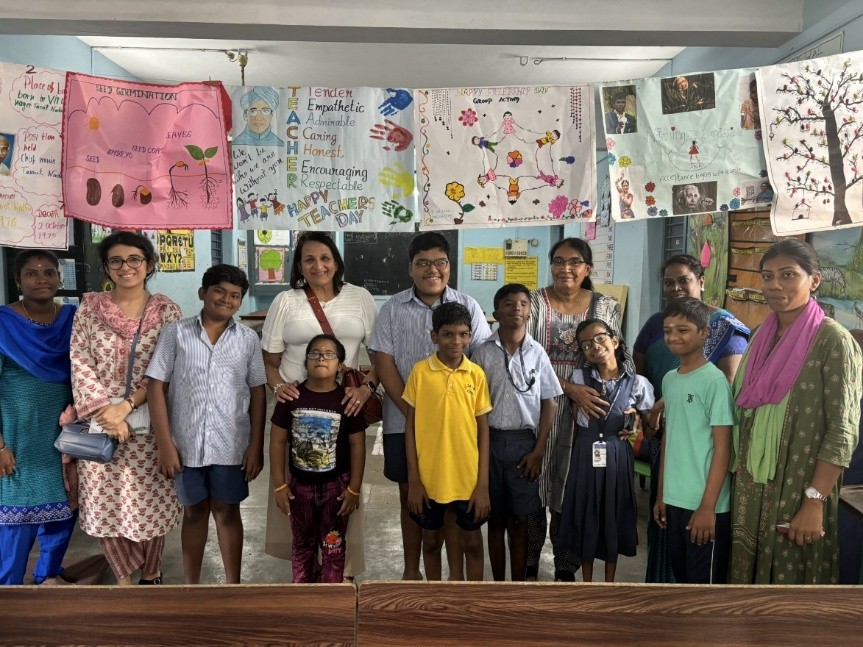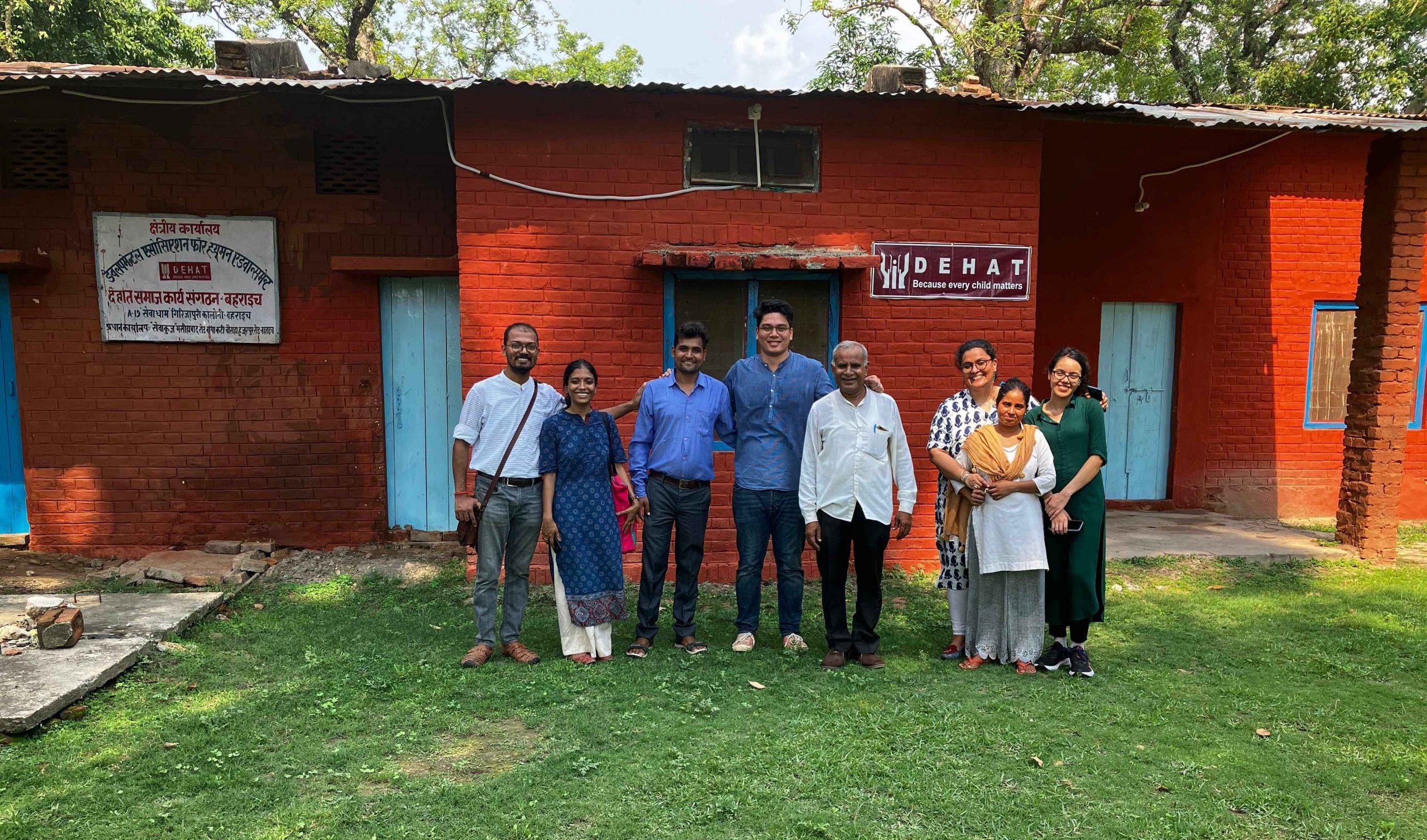In the heart of Puducherry—a town where French heritage intertwines with the rhythms of Indian culture—lies a reality often overshadowed by its serene beaches and spiritual allure. Beyond postcard-perfect scenery, countless families silently struggle with the complex challenges of nurturing children with disabilities in an environment with limited or no support.
In this landscape of both beauty and hardship, Satya Special School (Satya) emerges as a space to build knowledge, strength and shared support, transforming lives of children, mothers, caregivers and families through localized holistic interventions.
My interest in Satya’s work piqued when I first met the visionary founder and leader Chitra Shah in my hometown of Boston in early 2024. Her passion for the work stayed with me long after, and I knew I had to come and see it firsthand.
The New Born High Risk Clinic: A Foundation for Change
One of the first places I visited was Satya’s Newborn High-Risk Clinic at JIPMER, one of South India’s leading hospitals. This clinic focuses on babies born into uncertainty—premature, at-risk infants who, without intervention, could face lifelong disabilities.
I stood there, watching infants—some only days old—receiving critical therapies. The reasons behind these challenges I was told were many: maternal malnutrition, multiple pregnancies due to pressure for a male heir, and consanguineous marriages. But beyond the medical factors, what struck me most was the silent battle against stigma.
The hospital floor was filled mostly with mothers, with only a scattering of fathers. So many mothers had been abandoned in their fight—left to care for their child alone because of deeply rooted societal beliefs.
I met a woman who had travelled alone to the clinic, carrying her baby in her arms because her husband and mother-in-law refused to even touch him. They believed he was “inauspicious.” Though shaken, she pressed on.
Satya had stepped in here with an approach informed by science and local culture. Speech, occupational, and physical therapies give babies a fighting chance. Mothers are trained to spot early warning signs and provide at-home therapy, turning them into their child’s first and most important advocate. Educational videos, assistive devices, and unwavering emotional support strengthen this journey. Understanding local culture, stigmas and the complexity of familial structures, Satya helps mothers navigate through their child’s diagnosis with mothers and fathers support groups.
As we progressed towards our next stop, I couldn’t shake the thought of the relentless battles these mothers fought—and the challenges still ahead.

The Prosthetics Unit: Innovation Meets Compassion
Satya’s Prosthetics and Orthotics Unit resembled a typical woodwork shop at first glance. But the moment I stepped inside, I could feel the energy and passion of its head—Sathish Babu—a skilled prosthetics and orthotics expert. Chitra had entrusted him with full creative freedom, and it was clear he thrived on it. His eyes lit up with excitement as he eagerly walked me through his designs.
The unit had embraced lightweight, cost-effective materials like cardboard, moving away from the heavy, cumbersome steel and wood prosthetics of the past. The unit wasn’t just building assistive devices—they were crafting possibility, ensuring every child had the best chance at mobility and independence. But what truly set it apart was its child-centric approach. Bright colors, playful stickers, and custom designs turned medical aids into sources of pride—helping children embrace their prosthetics with confidence and joy.

Bridging Gaps in Education and Care
My next stops took me to the centres of education for children with disabilities. At a government school, I saw how Satya was quietly filling the gaps in integrating higher-functioning children with disabilities into mainstream education. Many public schools lacked the resources to support diverse learning needs, but Satya steps in—placing special educators, adapting classrooms, and designing inclusive playgrounds. Their focus was not just about access; it’s about ensuring children can participate fully, learning and growing alongside their peers.
Satya’s primary centre, dedicated to children with disabilities, was alive with energy—play, learning, and a sense of belonging. The atmosphere was structured yet warm, extending beyond academics. Children receive specialized education, therapy, and exposure to technology like Virtual Reality games to support their cognitive and physical development.
What stood out most was the broader impact. Many of the school’s educators were mothers of former students, creating a cycle of care and support that extended beyond the classroom. The schools fostered community integration and a strong curriculum while effectively scaling their impact. For a relatively small organization, the reach and influence of Satya’s work were striking.



The Mobile Units: Reaching the Unreachable
My visit to the schools had been a place of joy, filling me with hope. But my next stop was a stark reminder of the reality beyond the school’s walls. For children in remote villages, therapy isn’t just difficult to access—it’s nearly impossible. Satya’s mobile van units are changing this reality, carrying trained staff into the heart of these underserved communities. Traveling across 120 remote villages, they bring essential physical and speech therapy to children who would otherwise go without care, turning what was once an unreachable service into a precious opportunity for building health.
I visited one such village, to a settlement which was only half-built, its fragility mirroring the struggles of those who lived there. A mother stood quietly, watching as her child, severely affected by cerebral palsy, received physiotherapy. Her husband, a daily wage laborer, left at dawn each day, making travel for treatment an unaffordable luxury.
It was a sobering moment. Here, therapy wasn’t just support—it was survival.
Vocational Training: Building Futures
My subsequent stops were Satya’s vocational units where I saw firsthand how skills became stepping stones to independence. Students with disabilities were learning diverse crafts like weaving, baking, and ceramics. Their work was meticulous, their dedication unmistakable. When I tasted the biscuits they had baked and held the ceramics they had shaped, I wasn’t just witnessing skill—I was seeing confidence, purpose, and possibility.
Satya has introduced innovative partnerships—India’s first dental assistant training for individuals with disabilities and coding collaborations with Bangalore-based startups—creating new career possibilities. But challenges remain. Corporate inclusion is still limited, and more opportunities for safe, sustainable employment are needed.
My final stop was the vocational centre for women, a reminder that support must extend beyond the children themselves. Here, mothers of students earned a livelihood while staying close to their families, crafting shoes, bags, and artisanal products that even reached international markets. They weren’t just earning; they were rebuilding their sense of purpose.
While this indicated progress, the road ahead called for deeper acceptance and more inclusive opportunities.


A Vision for Inclusion and Hope
My day was a study in contrasts—one moment, I was in the newborn high-risk clinic, where the weight of uncertainty hung heavy in the air; the next, I was in a school filled with laughter and possibility. The village I visited felt tense, marked by struggle, yet the vocational centres radiated resilience and quiet triumph.
I witnessed firsthand the immense challenges endured by children with disabilities and their families—but I also saw how early intervention and personalized support can change the course of not just one life, but a whole family. It became clear that Satya isn’t just an institution—it is a movement that transforms lives at every stage, from infancy to adulthood.
After my trip, I was left with both hope and a deep sense of responsibility. A lot was underway, but there was still so much more to do to ensure every child has a chance to thrive and each caregiver, the support and hope they so desperately need.



